
Last Friday marked the three-year anniversary of my sobriety. I was a marijuana addict for about a decade, with phases of alcoholism and pain pill abuse sprinkled in here and there. My decision to become clean and sober for the rest of my life has been a resounding success. Since quitting, my physical and mental health have improved dramatically, and I’ve consistently moved in the right direction both personally and professionally.
I have never relapsed, and I’m certain that I never will. I have this level of confidence, ironically, because I lack overconfidence. I understand that “the most dangerous time for an addict is the first moment when things are going so well that you believe you’ve left the addiction behind forever.”1 This principle applies to all sorts of addictions other than drugs, such as video games, social media, television, and sugar. And it’s true because of a particular aspect of neuroscience, which is best understood through a metaphor that I call “The River.”
The River
The thoughts you have – your streams of consciousness – are very much like actual rivers of flowing water.2 The thoughts you have tend to flow into familiar channels – neural pathways carved into the brain like riverbeds that are carved into the earth. The same is true of your behaviors.
A new behavior is like a shallow stream that has not yet eroded a deep channel into the earth.
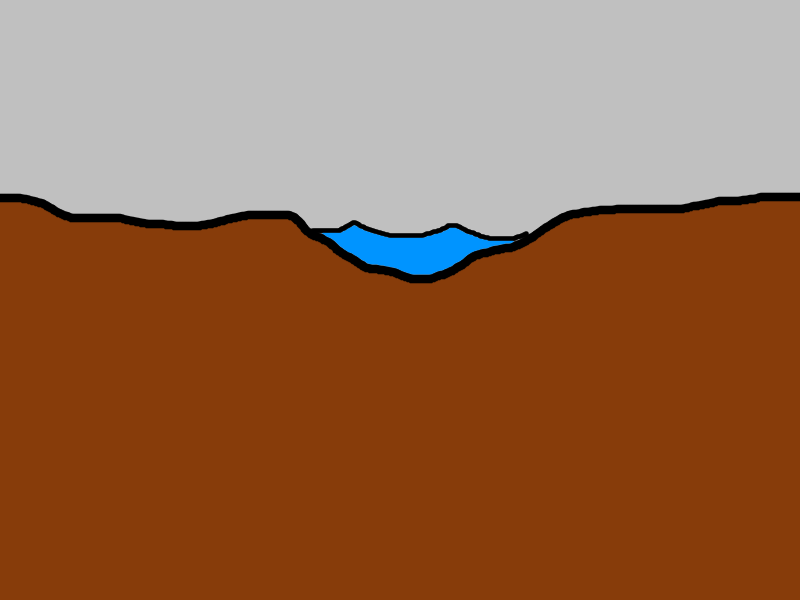
Riverbeds are deepened by flowing water, making the water more likely to flow there in the future. Likewise, neural pathways are strengthened by repeated thoughts and repeated actions, making it more likely that those thoughts and actions will happen again. This is how a habit – good or bad – becomes deeply ingrained.

If you want to quit a bad habit, addiction, or negative thought pattern, you might try block the flow of water by building a dam. For a bad habit, this means placing obstacles between you and your bad habit, making use of The 20-Second Rule. For an addict, this is done by removing all drugs from the home and telling everyone you know that you’ve quit. You don’t want anyone offering you a drink at a party, so you’d better announce to everyone that you’re sober. That, or avoid parties completely.
A dam is a good idea, but it’s not enough. If all you do is build a dam, the water will just pile up behind the dam with nowhere to go. This mounting pressure increases the likelihood of relapse. This is why it’s so essential to carve out an alternative pathway for the water to flow.
You Must Redirect the Water
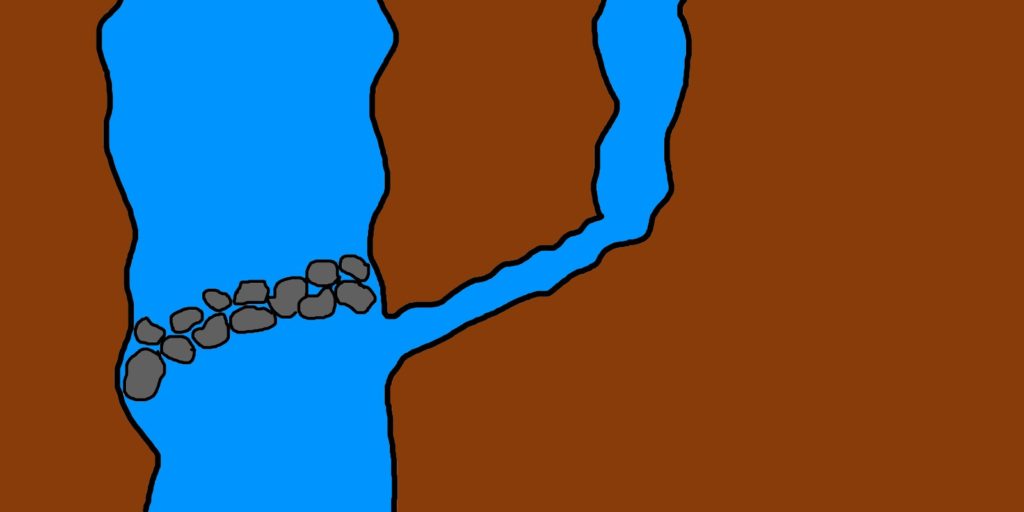
So you should not just quit a bad habit, but replace it with a better one. The water here represents the time, energy, and thinking that goes into your bad habit. If you suddenly quit without replacement, where will all the water go? The water will be eager to flow into the old channel unless an alternative is provided. Old thought patterns must be replaced with new ones. The energy you previously spent feeding your addiction must be directed elsewhere. And you’ll need something to occupy all the time you used to spend on your addiction.
Because of this, it’s very common for a new bad habit to arise just as you’re quitting an old one. Addicts unaware of this principle often make the mistake of replacing one addiction with another. Some people quit drinking and start smoking weed. Some people give up video games and start binge-watching Netflix. Unless you choose and then deliberately cultivate a good habit to replace your addiction, you’re likely to just swap out one unhealthy behavior for a different one.
So if you want to change the course of the river, you’ll have to dig a new channel for the water to flow into. This will require great effort. At first, the earth you dig into will be hard and dry, so it will feel unnatural for the water to flow there.

Yet you must do the work and have faith that it will get easier. It’s impossible to redirect all the water at once, so the urges to relapse will initially be strong. But if you dig even a tiny channel, a small percentage of the river will flow into it, and this water will help you carve out a deeper channel. You’ll have to keep digging, but now you’ve some assistance from nature, and, as a result, you’re building positive momentum.
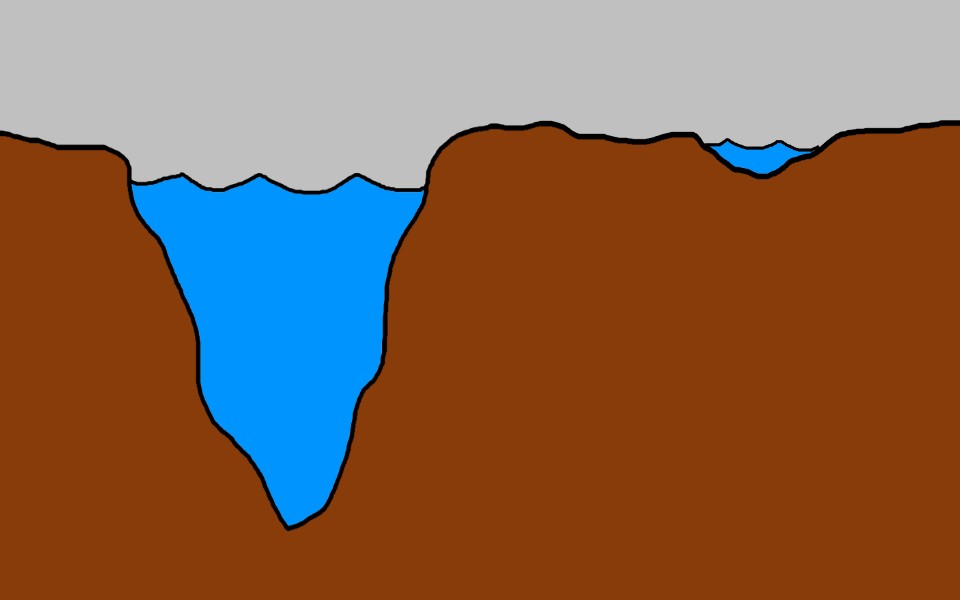
Changing deeply-ingrained thought patterns and habits is the same. Until you put in some hard work to make a change, all your thoughts and actions will continue to flow into the old channel. Your job is not simply to stop the old thoughts or behaviors; your job is to actively make new ones. New thoughts and actions rewire the brain. And remember, actions speak louder than thoughts, so focus on taking actual steps in the right direction. It takes consistent effort to carve out a new neural pathway.
Your new thoughts and behaviors won’t feel like your own at first, but this will change. Once you’ve created a new neural pathway, a small percentage of your old, automatic thoughts and behaviors will be redirected from the bad into the good. Over time, living up to your chosen identity will get easier and easier. With repeated use, the good neural pathways will strengthen and the bad ones will fall into disuse. More and more water will flow into the new river, and eventually, the old river will completely dry up.
But although things are easy at this final stage, there is also a hidden danger: overconfidence. And it is here that we find the true lesson of “The River.”
Relapse is Always Possible
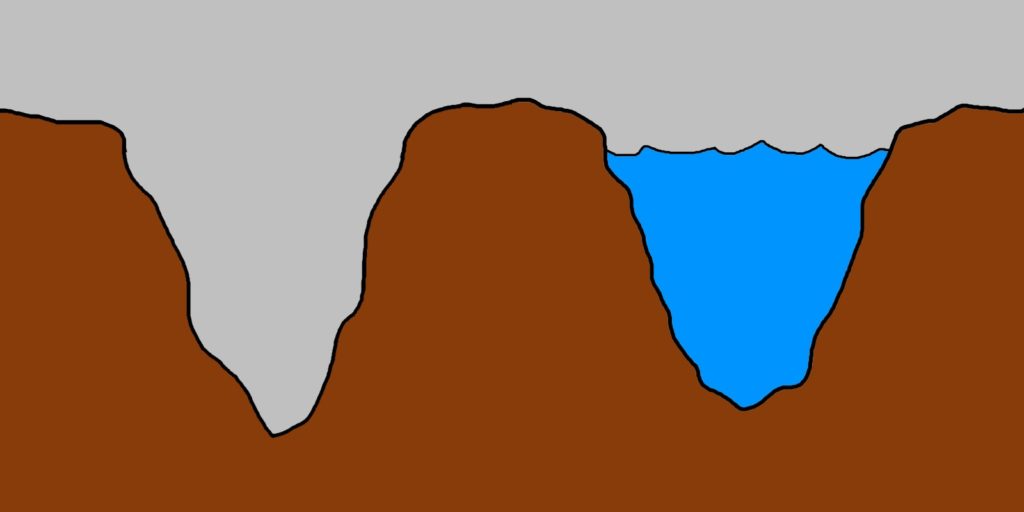
Because all the water now flows into the good river, you might mistakenly think that it’s impossible for the old river to be revived. But you must remember that the channel is still there, a dry riverbed waiting to be filled. As James Clear notes in Atomic Habits, “You can break a habit, but you’re unlikely to forget it. Once the mental grooves of habit have been carved into your brain, they are nearly impossible to remove entirely – even if they go unused for a while.”
If the old river was a drug addiction and the new river is sobriety, the overconfident recovering addict might think that he can handle “just a little taste,” but he can’t. Because the old neural pathways are still there, lying dormant, he’s risking a full-blown relapse. The raging waters that once filled the old riverbed could easily come roaring back.
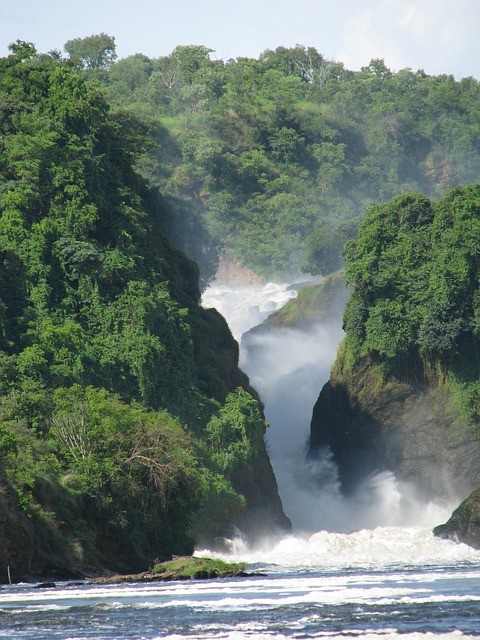
It’s said in 12-step programs like Alcoholics Anonymous that you have “no control” over your consumption, and that you have to ask a “higher power” – God – to help you get sober. I take issue with this, and not only because I’m agnostic. This approach is a recipe for passivity. You do have control over your consumption.
However, the notion that you have no control does contain a grain of truth that’s important to keep in mind. You control whether or not you consume that which you’re addicted to, but you don’t have control over how much you consume if you choose to start. Speaking from extensive personal experience, addicts are terrible at limiting their consumption to healthy amounts. If they’re using at all, they’re consuming too much, or they’re using too often, or both. So you don’t need God’s help to quit, but God help you if you need to quit and attempt moderation.
Moderation Doesn’t Work
I tried moderation dozens of times. I tried quitting for a week or a month or a year. I tried just quitting one thing but not everything. None of it worked. The only thing that worked was quitting everything, forever. Susan Peirce Thompson made a similar observation about food addictions in her book Bright Line Eating:
“There’s only one long-term, sustainable solution to this mess that I have ever seen work. It worked for me, and I have seen it work for thousands of others. Give up sugar and flour. Completely. Get them out of your system quickly and definitively.”
This is necessary because “once you’ve engaged in behaviors like regular binge eating, those fiber tracts are laid in the brain. They might not be active anymore, but they never go away, so you’ll always have to be more vigilant around food than someone who has never struggled that way.” 3
“The River” is really a metaphor for the power of 100% commitment. If we’re less than fully committed, we’ll allow water to trickle back into the old river, running the risk of that trickle turning into a deluge. Understanding this has safeguarded me from relapse.
Yet, while this truth is well known among addiction researchers, it’s not well known among those people actually struggling with addiction recovery. Please share this with anyone in your life who might find it helpful. Thank you.
1 Alter, Adam. Irresistible: The Rise of Addictive Technology and the Business of Keeping Us Hooked. Penguin Press, 2017.
2 This concept was inspired by Sebastian Seung’s book Connectome: How the Brain’s Wiring Makes Us Who We Are.
3 Peirce Thompson, Susan. Bright Line Eating: The Science of Living Happy, Thin and Free. Hay House, Inc., 2017.
